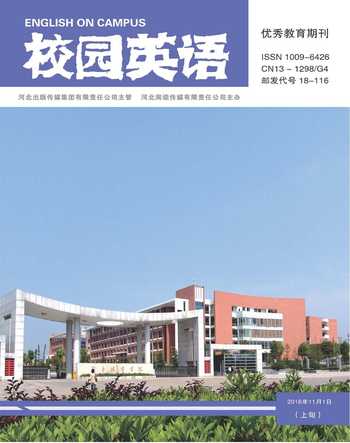A Review of Classroom Interaction in Second Language Acquisition
马红艳
【Abstract】Interest in classroom interaction has grown steadily both at home and abroad since the 1940s. From the second language acquisition perspective, classroom interaction has the Input Hypothesis, the Interaction Hypothesis and the Output Hypothesis as theory foundation. As to the current state of college English classroom interaction in China, it is still far from satisfaction. Teachers, students and the society should make their efforts to produce more effective classroom interaction.
【Key words】classroom interaction; Second Language Acquisition; teacher-student interaction; student-student interaction
1. Introduction
According to Tsui (1995:12), “In situations where the target language is seldom used outside the classroom, the students exposure to the target language is therefore mainly in the classroom.” This is the case in China. Interest in classroom interaction has grown steadily both at home and abroad since the 1940s. How to motivate students to take part in various kinds of communicative activities? How to achieve mutual understanding between the teacher and students? How to get twice results with half efforts? ... With these questions, more and more college English teachers have focused on classroom interaction.
2. Theoretical Foundation
The theoretical basis of interaction can be analyzed from psychological and second language acquisition aspect. The former mainly involves Constructivism, Socio-interactionism and Humanistic Approach. The latter primarily covers Krashens Input Hypothesis, Longs Interaction Hypothesis and Swains Output Hypothesis.
3. Patterns and Forms of Activities for Classroom Interaction
3.1 Patterns of Classroom Interaction
Ur (2000:227-238) listed the following 9 interaction patterns according to the order from the most teacher-dominated to the most student-active: Teacher talk , Choral responses , Closed-ended teacher questioning, Open-ended teacher questioning , Student initiates, teacher answers, Full-class interaction , Individual work , Collaboration, Group work .
3.2 Different Forms of Activities for Classroom Interaction
Second language learners are supposed to be offered abundant chances to see, hear, understand and practice the important points in class. In order to do that, group work, monologue and brainstorming are popular with a lot of English teachers. Group work can be reflected through debate, discussion, etc. One typical form of monologue is prepared class report by the individual. It also includes the report of group work by one student and impromptu presentation in the process of class. As to brainstorm, all of the students are offered equal opportunities to share their ideas.
4. The Current State of College English Classroom Interaction in China
Some college English teachers always complain about the passive class. They often say what they have planned and prepared are in vain. The reasons should be multi-dimensional.
First, teachers can not get rid of the responsibility. Although most college English teachers have realized the importance of classroom interaction, when it comes to reality, many of them are not willing to spend so much time and energy taking the risk.
Second, the fact that most students do not act their rights in class partly leads to the low efficiency. The students response often frustrates the teacher. Classroom interaction should be two-way communication; otherwise, it is bound to be a failure.
Third, it may lie with CET-4. In some universities, students have to pass CET-4, otherwise, they cannot graduate. Great emphases on CET-4 have affected both teachers and students attitudes. Most students spend a lot of time and energy doing some tests and memorizing vocabulary. Then how could they interact with each other actively?
5. Conclusion
It is clear that without interaction, English class is bound to be boring and ineffective. Successful classroom interaction does not only lie in the efforts of teachers but that of students and the society. Teachers should get rid of the dominant position and make good use of different forms of activities for classroom interaction; students should make good use of their equal status with the teacher as active participants rather than passive listeners; the society should emphasize on the comprehensive ability especially the communicative ability of the students instead of only high scores in the tests. In a word, in the new environment, both teachers and students should have a new understanding of their roles and responsibilities, moreover, it is the societys responsibility to make a balance between the ability and the test.
References:
[1]Penny Ur.A Course in Language Teaching:Practice and Theory[M].Beijing:Foreign Language Teaching and Research Press,2000:227-238.
[2]Tsui,A.B.M.Classroom Interaction[M].London:Penguin English,1995.

